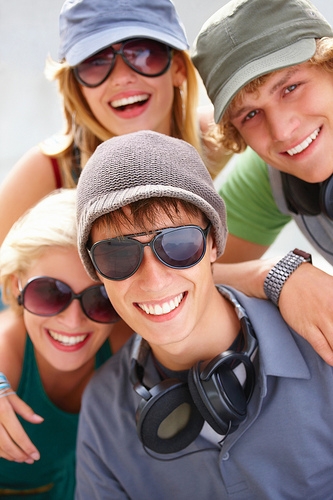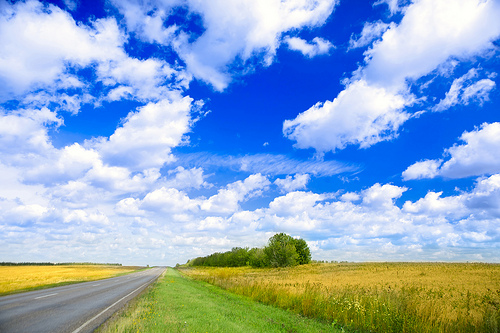June 25th, 2014

Straightening your teeth with traditional braces used to be something of a public affair. While traditional teeth-straightening methods yielded high-quality results, it was also essentially impossible to wear them undetected as you went about your day. The visibility of braces could be especially troubling to teens in the high-stress environment of high school and even during the early years of college.
With Invisalign Teen, Dr. Kathleen Tavarez and our team at Tavarez Orthodontics will tell you that many of those concerns are no longer as relevant as they once were. Because Invisalign Teen aligners are constructed out of a plastic that is both smooth and clear, in all likelihood friends and family members won’t even realize the teen is wearing them. The smooth and clear plastic also makes the aligners much more comfortable than traditional braces, which means the teenaged user won’t have to deal with something large and obstructive in his or her mouth.
Additionally, the Invisalign Teen aligners are specifically made to be removable when the need arises. Your son or daughter won’t have to worry about getting food stuck in the alignment trays because they can be pulled out before a meal and popped back in afterwards. Invisalign Teen wearers can remove the aligners before brushing, which allows them to make sure their teeth are free and clear of all obstructions.
Invisalign Teen aligners also allow wearers to keep doing all the activities they have previously enjoyed. If your teen plays sports, for example, he or she won't have to worry about a mouth filled with metal brackets getting injured during play. If your teen plays an instrument, he or she won’t have to worry about traditional braces affecting normal playing techniques. The aligners will remain both comfortable and convenient during all of those activities and more.
If your teen is concerned about physical appearance and worried that braces will adversely affect his or her life for a year or more, Invisalign Teen treatment with Dr. Kathleen Tavarez is definitely the right choice. Teens don’t have to be shy about their smile, won’t have to change any of the activities they normally do, and will still get all the benefits of straight teeth when the process is completed.
For more information about Invisalign Teen, or to schedule an initial consultation with Dr. Kathleen Tavarez, please give us a call at our convenient Menlo Park or San Carlos, CA office today!
June 18th, 2014

Great question! Tooth movement is your body’s natural response to light pressure applied by braces over a period of time (usually two years). Braces work by using brackets that are glued onto your teeth; these brackets have small slots, and that is where Dr. Kathleen Tavarez and our team insert orthodontic wires. These wires are held in place by small elastic ties that fit around the brackets. As time passes during your treatment, these wires apply pressure on your teeth, which sets in motion the movement of your teeth into their desired positions. Each of your teeth has a different size and shape to them, as do the brackets. Each bracket is custom-made for the particular tooth on which it’s supposed to fit.
Not long ago, orthodontists had stainless steel wires and that was about it. Today, however, we have a number of different high-tech wires at our disposal to move your teeth faster and more comfortably.
When you first get your braces on, the first wire or two will typically be very flexible, but still strong enough to apply a constant force on your teeth. As your teeth straighten out over time, however, Dr. Kathleen Tavarez will use progressively thicker and firmer wires to help move your teeth in place for an ideal bite.
Every time you visit our office for an adjustment, we will swap out the wires in order to keep putting pressure on your teeth, which is why it’s so important for you to keep your adjustment visits during your treatment. Most adjustment appointments are scheduled four to eight weeks apart to give your teeth time to move.
As for rubber bands and elastics, most of our patients will need to wear elastics or rubber bands at some point during their treatments. These elastics typically go from one or more of the upper braces to one or more of the lower braces, and pull on your teeth to move them in the direction they need to move in order to achieve an optimal bite.
If you have any questions about wires, brackets, or elastics, or have any general questions about your treatment, please give us a call at our Menlo Park or San Carlos, CA office.
June 11th, 2014

Sticky, hard, and gooey: these candies fill your dopamine receptors with spasms of sugar-filled joy, but if you’re undergoing orthodontic treatment at Tavarez Orthodontics to straighten your teeth, then these sweets are not so sweet. While you may have a Willy-Wonka-sized sweet tooth, there are some candies you’re going to have to avoid while wearing braces.
Here are five bracket- and wire-destroying culprits that Dr. Kathleen Tavarez and our team recommend leaving on the candy aisle and not put in your mouth, no matter how tempting they may be.
- Gum is sticky and stringy. It can get tangled like fishing net in your braces. You don’t want to be that boy or girl trying to pull knots of Wrigley’s out of your braces without being seen.
- All chewy, gooey candies need to be avoided. When you’re wearing braces, don’t even think about putting a caramel candy in your mouth. Caramel will not only stick to your braces, making it look as if you haven’t brushed your teeth in a week, but the gooey texture can pull apart the wires, and trigger an emergency visit to Tavarez Orthodontics.
- Hard candy may seem like a safe choice, but it’s not. What’s the problem? Nobody ever just sucks on hard candy; sooner or later, we bite down on it. Biting a hard candy may cause part of your braces to snap. Furthermore, once the candy is broken into a bunch of little pieces, it’s not uncommon for one of those sugary shards to get wedged between your braces and teeth … and that’s a cavity waiting to happen.
- The taffy you enjoy getting at a seaside boardwalk is going to have to go on the back burner. Like caramel, taffy can pull apart and damage your braces. You don’t want to have your expensive orthodontic gear replaced.
- Please, just one lollipop? Nope. A lollipop is nothing more than hard candy on a stick. If you can’t have hard candy during orthodontic treatment, then you shouldn't have hard candy on a stick either.
Have any more questions about what you can and can’t eat when you have braces? Please give us a call at our convenient Menlo Park or San Carlos, CA office to learn more, or ask Dr. Kathleen Tavarez during your next adjustment visit!
June 4th, 2014

If you are wearing braces and are planning a vacation, our team at Tavarez Orthodontics would suggest that you be prepared. We put together a list of items that will be handy to have with you at all times while you are out of town. They include:
- Toothpick, flosspick, or other interdental cleaners
- Travel toothbrush
- A water bottle or a mini bottle of mouth rinse
- Orthodontic wax to help with discomfort from protruding wires
- A small mirror for examining any possible issues in your mouth
Putting these items together in a “braces/oral hygiene kit” may be wise. You may even buy pre-made braces kits. Please ask us for more information.
If you happen to be on vacation and experience problems reaching our office, we suggest going online and searching for orthodontic practices in your area. Most orthodontists will lend a helping hand to another orthodontic patient and get him or her out of pain or discomfort.
We also suggest avoiding the following foods to prevent broken brackets and/or wire distortion while you are on vacation:
- Chewy, sticky, or gummy food
- Apples, pears, and other whole fruits (cut fruit into wedges before consuming)
- Bagels and hard rolls
- Corn on the cob
- Hard candies
- Hard cookies or pretzels
- All varieties of nuts, including peanuts, almonds, and cashews
Finally, if you are wearing clear aligners and happen to lose your tray, don’t worry! Simply put in either the previous tray or the next tray and contact us as soon as you get home!
Follow these tips and you can have a worry-free vacation! Please give us a call if you have any questions!











 Website Powered by Sesame 24-7™
Website Powered by Sesame 24-7™